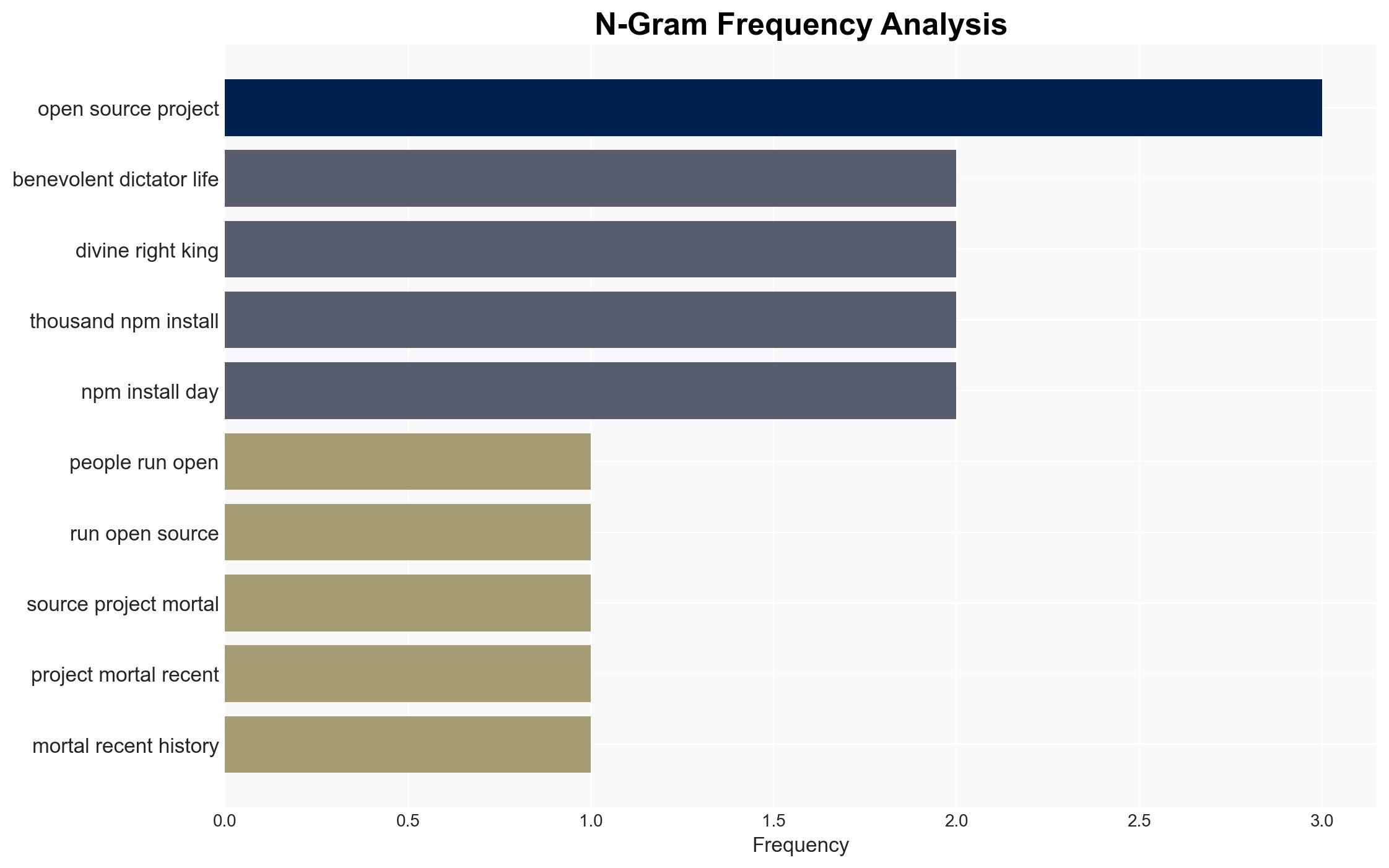The Peaceful Transfer of Power in Open Source Projects – Shkspr.mobi
Published on: 2025-11-19
AI-powered OSINT brief from verified open sources. Automated NLP signal extraction with human verification. See our Methodology and Why WorldWideWatchers.
Intelligence Report:
1. BLUF (Bottom Line Up Front)
The strategic judgment is that the peaceful transfer of power in open source projects is crucial for their sustainability and growth. The most supported hypothesis is that structured succession planning and community governance are essential to prevent project stagnation or collapse. Confidence Level: Moderate. Recommended action is to encourage open source projects to adopt formal governance structures and succession plans to ensure continuity and resilience.
2. Competing Hypotheses
Hypothesis 1: Open source projects can sustain themselves through informal leadership transitions and community-driven governance without formal succession plans. This hypothesis suggests that the collaborative nature of open source projects inherently supports a peaceful transfer of power.
Hypothesis 2: Open source projects require formal governance structures and succession planning to ensure stability and prevent power vacuums or authoritarian control. This hypothesis posits that without clear guidelines, projects are vulnerable to leadership crises and potential collapse.
Hypothesis 2 is more likely given historical examples of leadership challenges in open source projects and the complexities involved in managing large, distributed communities.
3. Key Assumptions and Red Flags
Assumptions: It is assumed that all open source projects have the potential to grow significantly and that leadership transitions are a critical factor in their success. It is also assumed that community members are willing to engage in governance processes.
Red Flags: Lack of transparency in project governance, absence of documented succession plans, and over-reliance on a single leader are red flags indicating potential instability.
4. Implications and Strategic Risks
Without structured succession planning, open source projects face risks such as leadership vacuums, fragmentation, and potential takeover by external entities. This can lead to project stagnation, loss of community trust, and reduced innovation. In the cyber domain, poorly managed transitions can expose projects to security vulnerabilities and exploitation.
5. Recommendations and Outlook
- Encourage open source projects to develop formal governance structures and succession plans.
- Promote transparency and community involvement in leadership transitions.
- Best-case scenario: Open source projects implement effective governance, leading to sustained growth and innovation.
- Worst-case scenario: Projects experience leadership crises, resulting in fragmentation and decline.
- Most-likely scenario: Projects with formal governance structures will outperform those without, demonstrating the importance of structured leadership transitions.
6. Key Individuals and Entities
Eugen Rochko (Mastodon)
7. Thematic Tags
National Security Threats, Open Source Governance, Leadership Transition, Cybersecurity Risks
Structured Analytic Techniques Applied
- Cognitive Bias Stress Test: Expose and correct potential biases in assessments through red-teaming and structured challenge.
- Bayesian Scenario Modeling: Use probabilistic forecasting for conflict trajectories or escalation likelihood.
- Network Influence Mapping: Map relationships between state and non-state actors for impact estimation.
Explore more:
National Security Threats Briefs ·
Daily Summary ·
Support us





